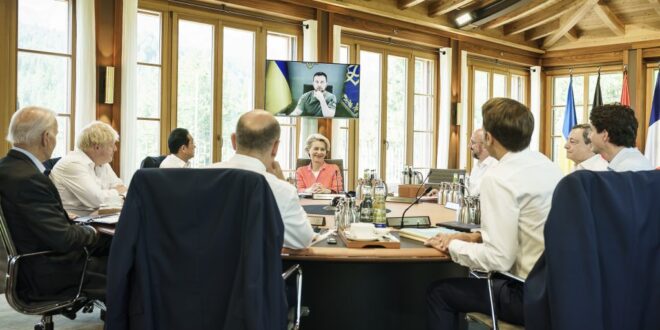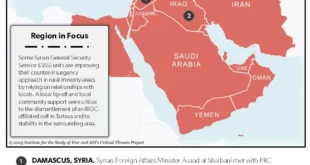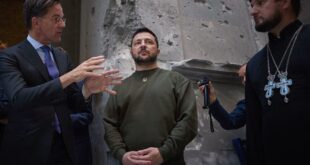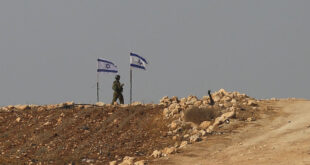Heading into this week’s Group of Seven (G7) and NATO summits, many observers (and the Kremlin) anticipated a weakening of Western support for Ukraine as inflation, soaring energy prices, and domestic political distractions continued to mount in the United States and many European countries.
That didn’t happen. Instead, major democracies rallied their economic and military might to push back against Russia’s aggression in Ukraine and against Europe more broadly.
Steps taken by the G7 and NATO members varied: Some are ready to roll and be implemented, but others less so—with details and implementation (hopefully) to follow. Here’s a breakdown of what was accomplished with a focus on Russia-related issues.
Increasing economic pressure
The new G7 measures announced include:
Banning the purchase of Russian gold. Russia is a major exporter, with fifteen billion dollars in exports in 2021. Implementation seems likely soon.
Cracking down on sanctions evasion. This will require persistent and labor-intensive efforts, since Russia will find elaborate and novel ways to evade sanctions through cutouts, false-front operations, willing partners among businesses and even some governments, and more. Enforcement will be difficult as always, but the statement of political will is commendable and necessary to empower enforcers, especially in the United States, United Kingdom, and European Union (EU).
New export restrictions on high-tech products to Russia. The G7 decided to embrace the US ban on exports on semiconductors (chips) to Russia and extend it to additional high-tech products. Judging by reports of Russian production difficulties due to the earlier US chip ban, this is a potentially powerful measure. But details of exactly which products will be restricted have not yet been announced.
New tariffs on imports of Russian products. The duties will presumably be diverted to financially support Ukraine, according to the G7 statement. Details of the products and the amount of tariff revenue have yet to be announced, but the United States has already started to implement this.
Price caps on Russian oil. The G7 agreed to consider a price cap on Russian oil in coordination with other purchasers. If implemented and effectively enforced, this could be a major blow against Russia’s economy, since oil is Russia’s largest export (with sales currently running at twenty billion dollars per month). Still, Russia could increase its exports to other countries, denting the feasibility of this measure. It depends on whether third countries, including China, are willing to follow along, either willingly or under pressure—e.g., through the threat of secondary sanctions or restrictions on insurance and shipping to support oil sales. In the meantime, the United States and G7 are in the awkward position of having announced a major action without yet having the means of delivering it.
Using frozen Russian reserves for Ukraine. In a little-noticed sentence toward the end of its statement on Ukraine, the G7 agreed to explore using the more than three hundred billion dollars in Russian foreign reserves it froze shortly after the February 24 invasion. This could be used, according to the G7, for Ukraine’s humanitarian needs, recovery, and reconstruction—and would amount to a major and almost unprecedented step (and a difficult legal and policy lift). But given the extent of Ukraine’s needs, and the likely resistance of G7 legislators to continue to use taxpayers’ money, policymakers may be tempted to find a way to make this work.
Strengthening military might
Determining that Russia “is the most significant and direct threat to Allies’ security,” NATO leaders took the following steps:
The United States announced new deployments in NATO’s eastern flank, including a forward element of the V Corps to Poland, the first permanent US deployment in the region; a combat brigade to Romania on a rotational basis; and rotational deployment of armored, aviation, air defense, and special forces units in the Baltic states and region. (Beyond the eastern flank, the United States announced that it will send F-35 fighter jets to the United Kingdom, air-defense assets to Germany and Italy, and more.)
Canada, the United Kingdom, and Germany are preparing to increase their deployments in the Baltic States to brigade strength. After Russia’s initial attack on Ukraine in 2014, NATO decided to deploy battalion-strength units in each of the Baltic States and Poland. NATO has decided to increase this presence to brigade strength in all the Baltic states. Details, including how many units will be forward deployed in the Baltics and how many will be held as a quick-reaction force are being worked out. Given the potential for a sudden Russian assault on the Baltics, the details about reinforcement and how much of each brigade’s strength will actually be forward deployed and how much will be held in reserve until needed will be important.
NATO invitations to Finland and Sweden. In a twist that was unthinkable even a year ago, Finland and Sweden decided to seek NATO membership and, after an intense period of diplomacy with Turkey, NATO has extended invitations. Their accession would strengthen security in the Baltic Sea and for the Baltic states, dealing a blow to Putin’s efforts to intimidate Europe into accepting a Russian sphere of influence over its neighbors to the west.
The political will to support Ukraine and resist Putin’s aggression remains high. Taken together, these are major steps, even given the uncertainties around price caps, the use of frozen reserves for Ukraine, and the NATO deployments to the Baltics.
But Russia’s war against Ukraine continues, with Kremlin troops still advancing in eastern Ukraine’s Donbas region. The week’s summits generated quite a bit of policy but did not mark a major advance in the pace or extent of US and other Western weapons and munitions to Ukraine, upon which so much depends. To be sure, the free world’s leading institutions did a lot this week—but the war still hangs in the balance.
 Eurasia Press & News
Eurasia Press & News



